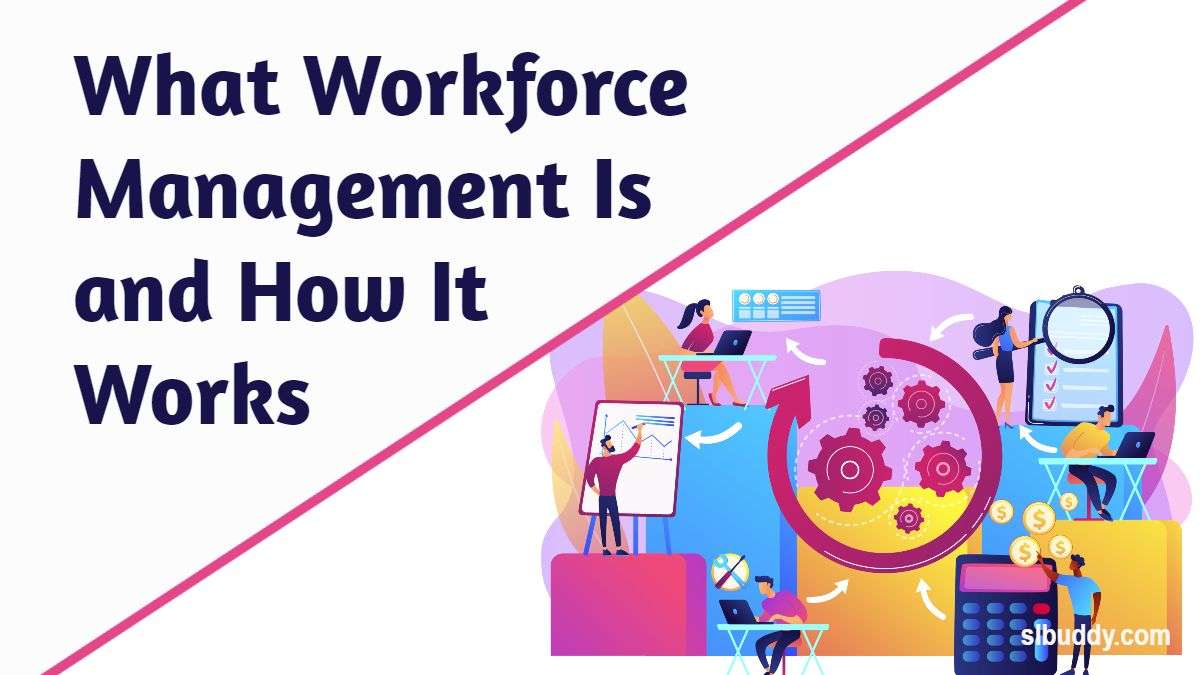
Workforce management refers to the integrated processes that a company uses to maximize the productivity of its employees. Manpower management is basically a scheduling process. The framework of this process has become more complex with the advent of the ever-evolving technology market. Such a management system is used to maintain budgeting, human capital and scheduling for your workforce.
In simple words, workforce management is a framework used to maximize the productivity of an employee working in an organization.
These systems provide insight into important information, such as the exact number of employees needed to complete a specific job at a given time of day, week, or month. It also helps to monitor the daily performance of employees.
The use of these system frames is advantageous. That is, it leads to increased efficiency, compliance, and productivity in several industrial types, and other job activities.
Today many organizations can take advantage of WFM tools and processes to enhance their corporate performance, training management, data collection, recruitment, scheduling, forecasting, and analysis.
To make the system more efficient, you can follow some of the most critical workforce management processes. These include data collection, accurate forecasting, new recruitment, assignment, and scheduling.
These workforce management systems may also include tools such as easy-to-use time and attendance software to manage staff. Numerous businesses use these WFM procedures to manage their analytical intelligence as well as to bring their employees into a proper framework.
A company or organization uses these verbs because of its advantages. That is, it helps you deal with all the important details your business needs. It helps you to analyze the current state of the company, and as a result, you can maximize resources and reduce labor costs without compromising the quality of the work.
Workforce Management in Action
In today’s skills-based economy, the workforce is arguably the most important perceived asset of many organizations. This section describes what a practical and functional workforce planning process should look like.
Solid WFM technology begins with maintaining the highest level of security and efficiency. But at the same time, it gives an accurate and precise picture of the work required to complete each task assigned.
Utilizing that basic premise, companies can mostly use WFM to identify demand-based schedules, predict appropriate employee numbers, and measure performance to provide employee feedback and incentives.
In addition, another thing you need to keep in mind is that WFM does not focus solely on employee scheduling and performance. It also identifies how many companies should invest in their employees. Furthermore, robust WFM technology includes online training and supervisor-based teaching to ensure that employees have the latest skills. This allows the company to ensure that employees are up to date on their jobs.
This means that if WFM is implemented correctly, it will be possible to improve customer service by automatically and constantly monitoring employee services. It can also help companies reduce costs.
It can be predicted that there will be some future demands for certain seasonal skills or some departmental cuts in the company and this will definitely make it easier for you.
A workforce planning process is also a forecasting tool that helps an organization measure its workforce gap and respond to it. Conventional barriers to workforce design are somewhat difficult to overcome, but the benefits are many. Although many managers focus on implementing the results, if the workforce planning is generally focused on a long time frame, it does not show immediate benefits that will help achieve the results. Accordingly, a workforce management analyst plays a more specific role in the workforce management process.
Also Read: Best and Free Accounting Software for Small Business
Workforce Management Analyst
What should be done simply in the management of the workforce should be done.
# Preparation of workforce management analyst programs.
# Budgeting and forecasting.
# Improving the management efficiency of the workforce.
# Provide daily and weekly schedules and real-time monitoring support for customer service.
# Observe and analyze data to assist executive management staff decisions.
Some companies try to use workforce management analysts to better monitor the procedure. Therefore, the workforce management framework has certainly evolved. The job of a WFM analyst requires a combination of analytical, human, and operational skills to manage the work.
A person working as a WFM Analyst has a significant share of responsibilities in the organization. That is, collecting data from the company’s workforce, analyzing important data to identify trends, and designing planning and operational objectives for successful business operations.
Furthermore, the workforce management analysts will also look into the organization’s redundancies to find ways to reduce costs and reduce budget problems.
The role of WFM analysts is largely common in business settings such as call centers. They hire a large and complex workforce that needs to be properly located and scheduled.
Also, some WFM analysts are sometimes short-lived. That is, they can also work as mentors who bring you into the picture for a short period. WFM strategies help to work, correct any inconsistencies, and analyze data from an existing WFM process.
WFM started as a scheduling system, but over time it has evolved into a multi-level management system used to help organizations pursue employee productivity without much hassle.
Also Read: Best Payment System for Small Business
Knowledge and skills required for workforce management
# Knowledge of call center management.
# Strong functional analysis skills.
# Ability to create well-organized, accurate, and concise material documents.
# Ability to create and maintain databases.
# Ability to use them to submit for internal and external connections.
# Knowledge of labor force management tools.
# Ability to work independently.
# Ability to do multiple tasks.
# Ability to work in a fast environment.
Conclusion
The article above makes it clear to you that workforce management is the process of strategically maximizing employee productivity to ensure that all resources are in the right place at the right time.
WFM was started as a means of improving the efficiency and productivity of call centers. But since then, it has expanded to other industries and jobs. Accordingly, it has developed into a framework that can provide an analytical understanding of the workforce. It should be clear to you that it brings great benefits both institutionally and personally.










